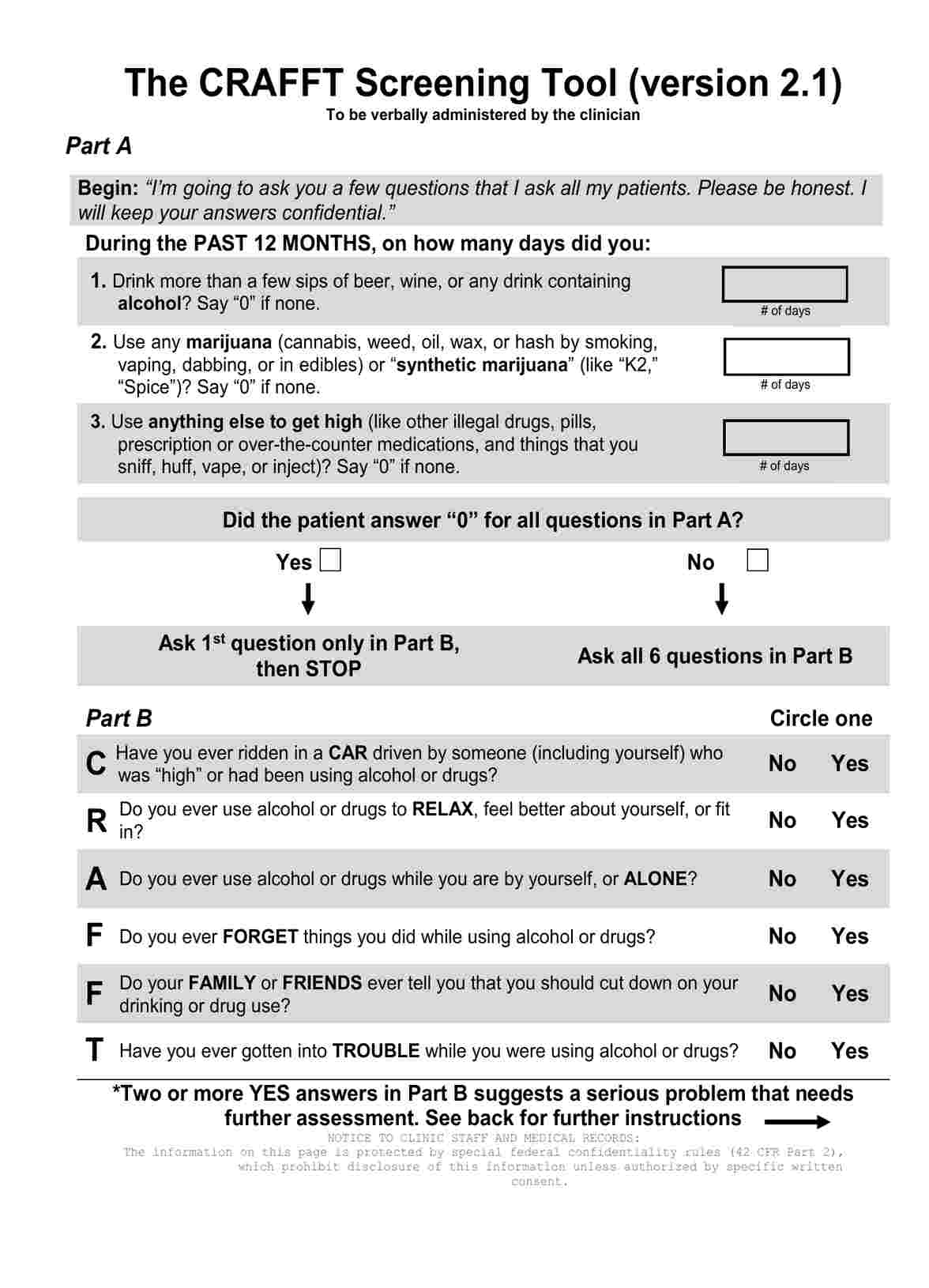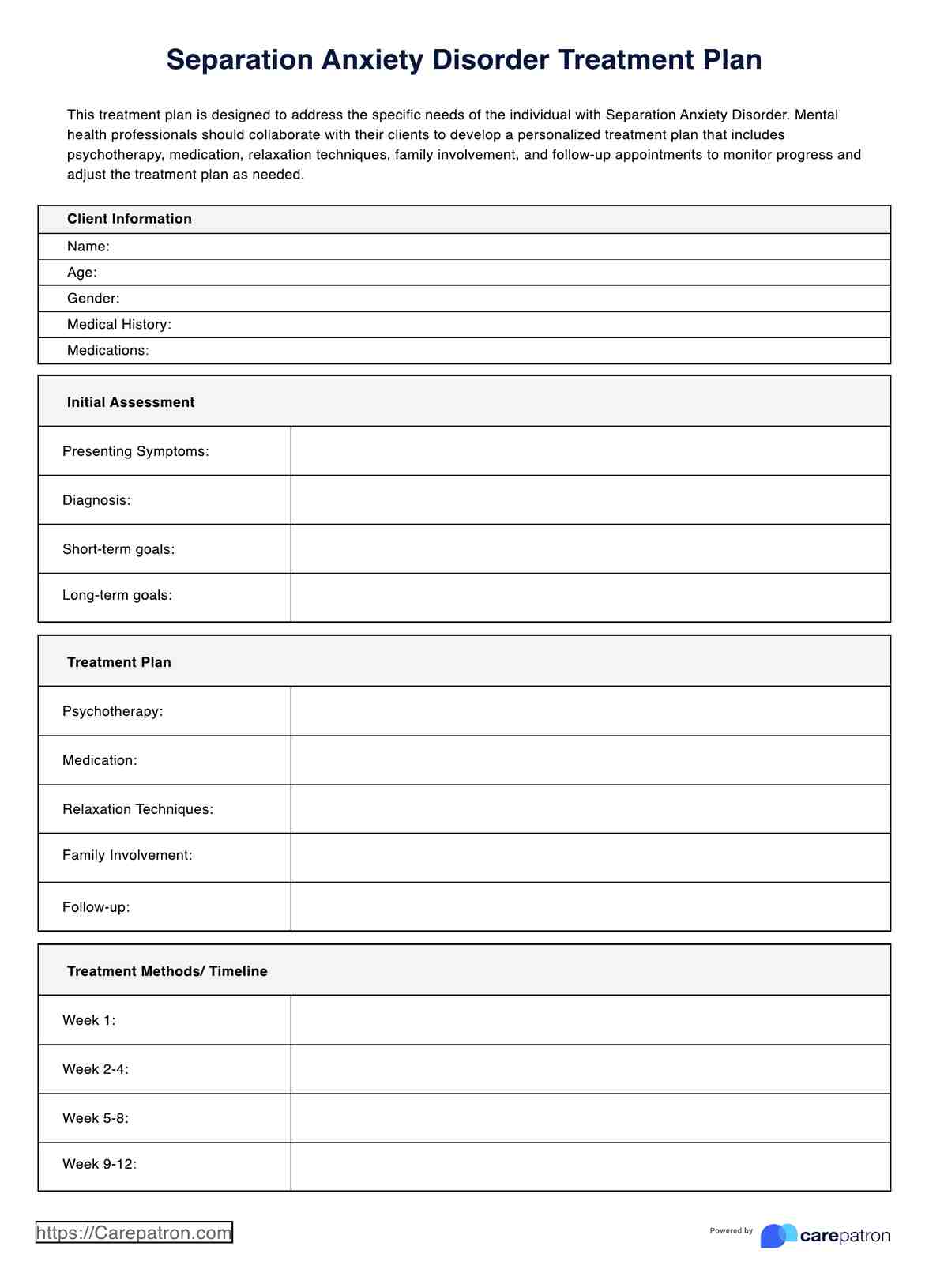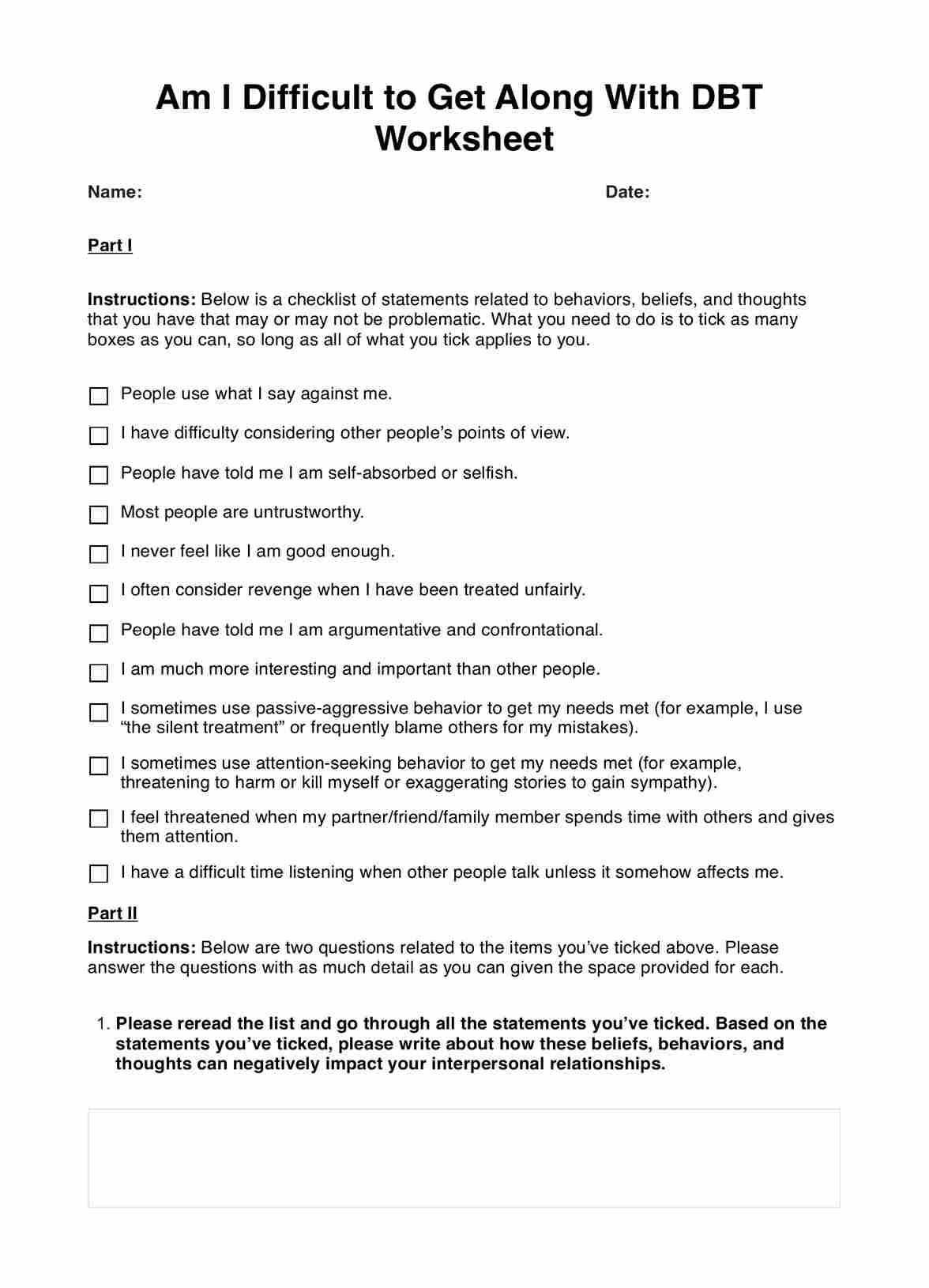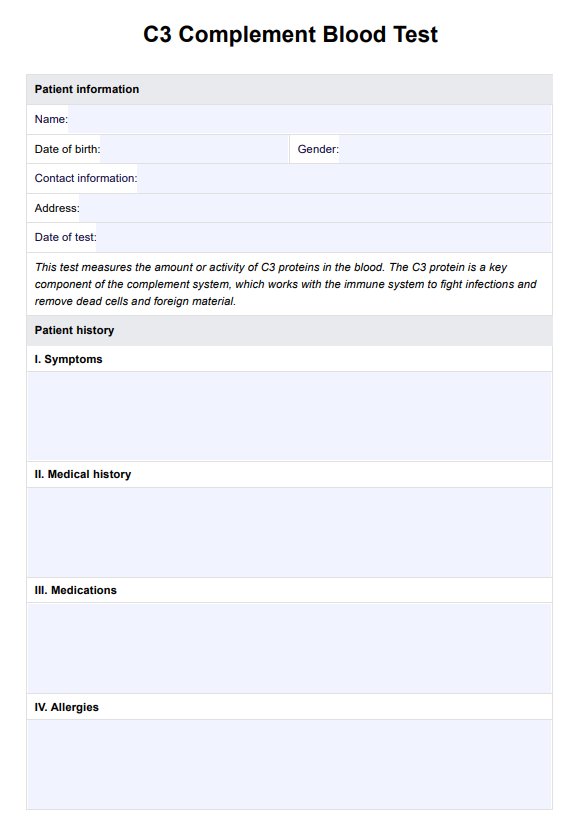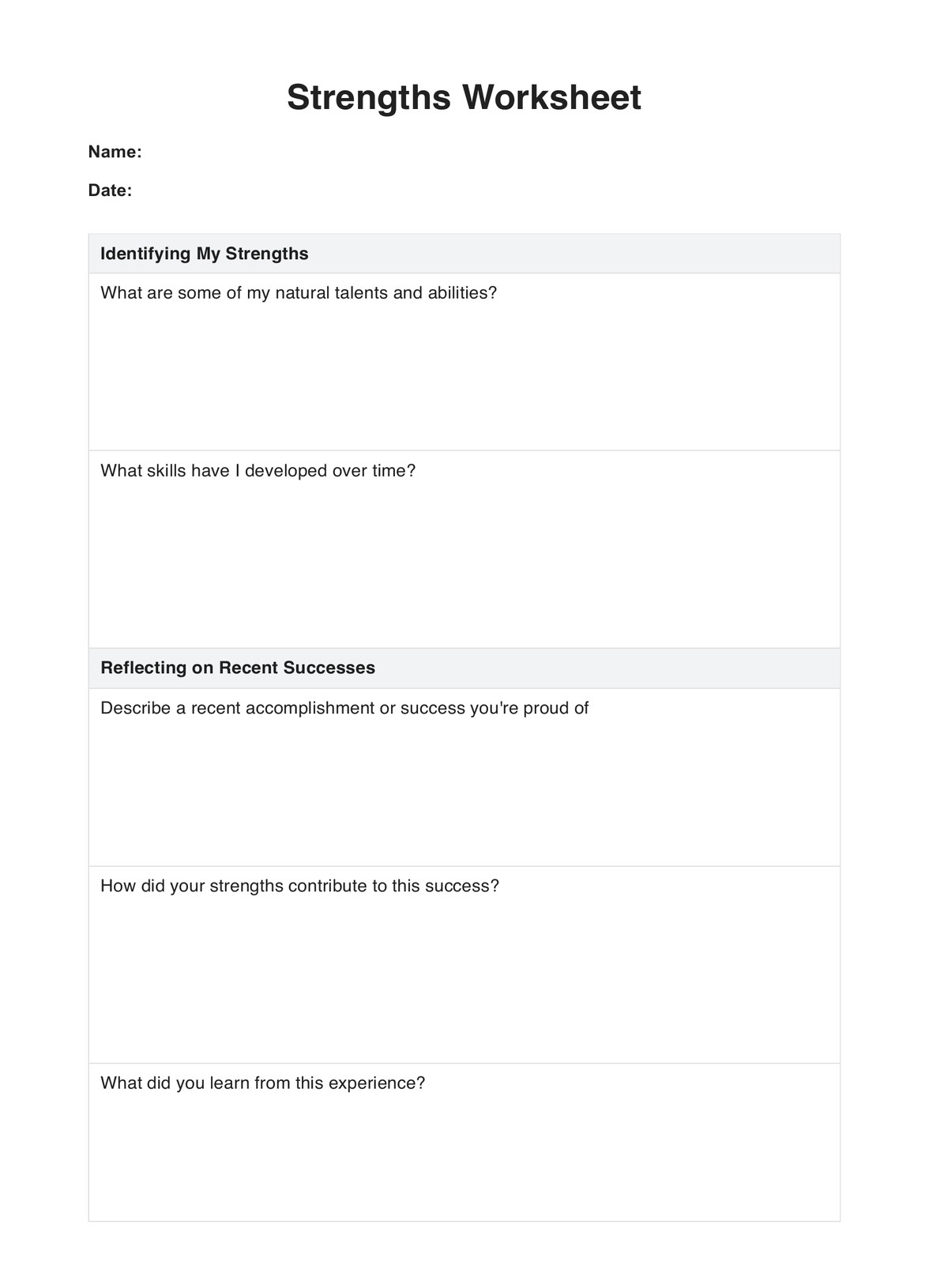Cognitive Defusion Worksheet
Discover mental freedom with the Cognitive Defusion Log Worksheet. Challenge negative thoughts and break free from their hold. Start now!


What is cognitive defusion?
Cognitive defusion, a prominent technique in acceptance and commitment therapy (ACT), offers a unique approach to transforming individuals' relationships with their thoughts. As healthcare practitioners dedicated to improving mental well-being, it is crucial to comprehend the concept and application of cognitive defusion to effectively assist clients in overcoming cognitive entanglement and fostering psychological flexibility.
Cognitive defusion involves distancing oneself from the content and impact of thoughts, allowing individuals to observe them without judgment or attachment. It is based on the recognition that thoughts are not necessarily accurate reflections of reality and need not dictate one's actions or emotions. Individuals can loosen the grip of unhelpful thoughts and create space for intentional, value-based living by cultivating cognitive defusion.
Practitioners employ a variety of techniques to facilitate cognitive defusion. These may include metaphorical exercises, verbal repetition, or utilizing mindfulness practices. Metaphors, such as viewing thoughts as passing clouds or leaves on a stream, help clients detach from the content of their thoughts and see them as transient events in their minds. Verbal repetition involves repeating a thought until it loses its impact and becomes a series of sounds. Mindfulness practices enhance awareness of the present moment, enabling individuals to observe thoughts without becoming entangled.
Cognitive defusion has been proven effective in various mental health conditions, including anxiety disorders, depression, trauma-related disorders, and chronic pain. By defusing distressing thoughts, individuals can reduce psychological suffering, enhance self-compassion, and make room for values-based actions. Furthermore, cognitive defusion complements other therapeutic approaches, such as cognitive-behavioral therapy, by addressing cognitive rigidity and facilitating flexibility.
As healthcare practitioners, understanding and implementing cognitive defusion techniques can be a valuable addition to our therapeutic toolbox. By guiding clients in defusing unhelpful thoughts, we can empower them to develop healthier relationships with their thinking patterns, leading to greater well-being, improved emotional regulation, and the pursuit of a more meaningful life aligned with their values.
Cognitive Defusion Worksheet Template
Cognitive Defusion Worksheet Example
How does this Cognitive Defusion Log Worksheet work?
The Cognitive Defusion Log Worksheet is designed to help individuals practice cognitive defusion techniques and develop healthier relationships with their thoughts. It provides a structured format to identify unhelpful thoughts, recognize their impact, apply defusion techniques, and take aligned action based on personal values.
Here is a step-by-step guide on how to use the printable Cognitive Defusion Log Worksheet:
Download and print the worksheet:
Find a printable version of the Cognitive Defusion Log Worksheet. You can often find these worksheets online by searching for "printable cognitive defusion log worksheet." Print out a copy to have it readily available for use.
Identify the unhelpful thought:
In the first section of the worksheet, identify a specific thought or inner narrative that is causing distress or holding you back. This could be a negative self-belief, a self-critical thought, or a limiting belief.
Notice the impact:
In the following section, describe any patterns or consequences you have noticed due to this unhelpful thought. Reflect on how it affects your emotions, behavior, and overall well-being. Understanding the impact helps create awareness around the thought's negative influence.
Choose a defusion technique:
The worksheet provides a list of defusion techniques. Choose one that resonates with you or feels appropriate for the identified thought. Each technique offers a unique way to distance yourself from the unhelpful thought and reduce its power over you.
Apply the defusion technique:
In the corresponding section, apply the chosen defusion technique to the identified thought. Follow the instructions or guidelines provided for each technique. The goal is to create distance, observe the thought without judgment, and loosen its grip on your mind.
Repeat the process:
Repeat steps 2-5 for each additional unhelpful thought you want to address. This allows you to explore different thoughts and practice various defusion techniques.
Reflect and reorient:
After using the defusion techniques, take a moment to reflect on any insights or shifts in perspective that occurred during the process. Consider how these insights can help you reorient your focus toward your values and take aligned action.
Create an action plan:
In the final section, write down one action you can take today that aligns with your values and moves you closer to your goals, regardless of the presence of the unhelpful thought. This action should reflect a commitment to personal growth and pursuing what matters most to you.
When would you use this Cognitive Defusion Log Worksheet template?
The Cognitive Defusion Log Worksheet template can be used in various situations to support individuals in managing unhelpful thoughts and developing healthier cognitive patterns. Here are some of the best/most appropriate times to use this worksheet:
Therapy or counseling sessions:
Therapists and counselors can use the Cognitive Defusion Log Worksheet template to guide their clients in challenging negative thought patterns. It can supplement cognitive-behavioral therapy (CBT), acceptance and commitment therapy (ACT), or other therapeutic approaches. By completing the worksheet, clients can gain insights into their thought processes, recognize the impact of unhelpful thoughts, and apply defusion techniques with the guidance of a healthcare professional.
Self-reflection and personal development:
Individuals who engage in self-reflection and personal development practices can benefit from using the Cognitive Defusion Log Worksheet template. It provides a structured framework for examining negative thoughts, identifying their consequences, and applying defusion techniques. This worksheet can be part of a regular mindfulness or self-help routine to foster self-awareness, challenge unhelpful thinking patterns, and cultivate resilience.
Stress management:
The Cognitive Defusion Log Worksheet template can be precious during times of increased stress or anxiety. It helps individuals understand the thoughts contributing to their distress and develop strategies to defuse their impact. By using this worksheet, individuals can become more adept at managing stress and preventing negative thoughts from overwhelming their well-being.
Mental Health and Wellness Workshops:
Healthcare professionals conducting mental health and wellness workshops can incorporate the Cognitive Defusion Log Worksheet template as an interactive exercise. Participants can explore their thought patterns, discuss the impact of negative thoughts on their mental health, and practice defusion techniques in a supportive group setting. This worksheet can enhance the learning experience and empower participants to take proactive steps toward improving their mental well-being.
What are the benefits of using this Cognitive Defusion Log Worksheet?
Using the Cognitive Defusion Log Worksheet can offer several benefits for individuals seeking to improve their cognitive well-being and develop healthier thought patterns. Here are some key advantages:
Increased self-awareness
The worksheet prompts individuals to identify and document their unhelpful thoughts, enabling them to understand better their thinking patterns and their impact on their emotions and behavior. This heightened self-awareness is crucial to change and growth (Hayes, Strosahl, & Wilson, 2012).
Challenging negative thought patterns
The worksheet encourages individuals to reflect on the consequences of their unhelpful thoughts. By recognizing how these thoughts affect their lives and well-being, individuals can begin to challenge and question their validity. This process facilitates the development of more balanced and realistic thinking (Graham & Masuda, 2014).
Application of defusion techniques
The worksheet provides a framework for individuals to apply defusion techniques, such as distancing, labeling, or observing thoughts without judgment. These techniques help individuals detach from their thoughts and reduce their influence over emotions and behaviors (Graham & Masuda, 2014).
Promotion of mindfulness and acceptance
This ACT Cognitive Defusion Worksheet encourages individuals to practice mindfulness by bringing conscious awareness to their thoughts and emotions. It also promotes acceptance of thoughts without getting entangled, fostering a non-judgmental attitude toward one's inner experiences (Hayes, Strosahl, & Wilson, 2012).
Empowerment and personal growth
By using the worksheet, individuals gain a sense of agency and empowerment over their thoughts. It allows them to reshape their thinking patterns actively, leading to personal growth, increased resilience, and improved mental well-being (Graham & Masuda, 2014).
Customizability and flexibility
A worksheet is a customizable tool that can be adapted to individual needs and preferences. It allows individuals to choose defusion techniques that resonate with them and apply them to specific unhelpful thoughts. This flexibility ensures the worksheet can be tailored to different therapeutic approaches and personal circumstances.
While there is a limited amount of specific research on this worksheet, it aligns with established evidence-based therapeutic approaches like cognitive-behavioral therapy (CBT) and acceptance and commitment therapy (ACT) that emphasize the importance of cognitive defusion techniques (Hayes, Strosahl, & Wilson, 2012; Graham & Masuda, 2014).
References:
Graham, J. R., & Masuda, A. (2014). Cognitive defusion and self-relevant negative thoughts: Examining the impact of a 15-minute defusion exercise. Journal of Contextual Behavioral Science, 3(4), 253-258. doi 10.1016/j.jcbs.2014.08.002
Hayes, S. C., Strosahl, K. D., & Wilson, K. G. (2012). Acceptance and commitment therapy: The process and practice of mindful change (2nd ed.). Guilford Press.
Commonly asked questions
The worksheet can help you develop a healthier relationship with your thoughts by increasing self-awareness, challenging negative thinking patterns, and promoting mindfulness and acceptance. It offers a systematic approach to recognizing the impact of unhelpful thoughts and applying defusion techniques to distance yourself from them.
Yes, the worksheet is designed for individuals to use independently. It can be a valuable tool for personal reflection, self-help, and promoting mental well-being. However, if you require additional support, seeking guidance from a qualified healthcare professional is advisable.
Yes, the Cognitive Defusion Log Worksheet provides a list of defusion techniques. Some examples include thanking your mind, naming your story, singing the thought, leaves on a stream, and thoughts as weather. You can select the technique that resonates with you or experiment with different techniques to find what works best.
The worksheet frequency can vary depending on your needs and preferences. You can use it whenever you notice unhelpful thoughts causing distress or holding you back. Some individuals find it helpful to use it daily or weekly, while others may use it as needed.


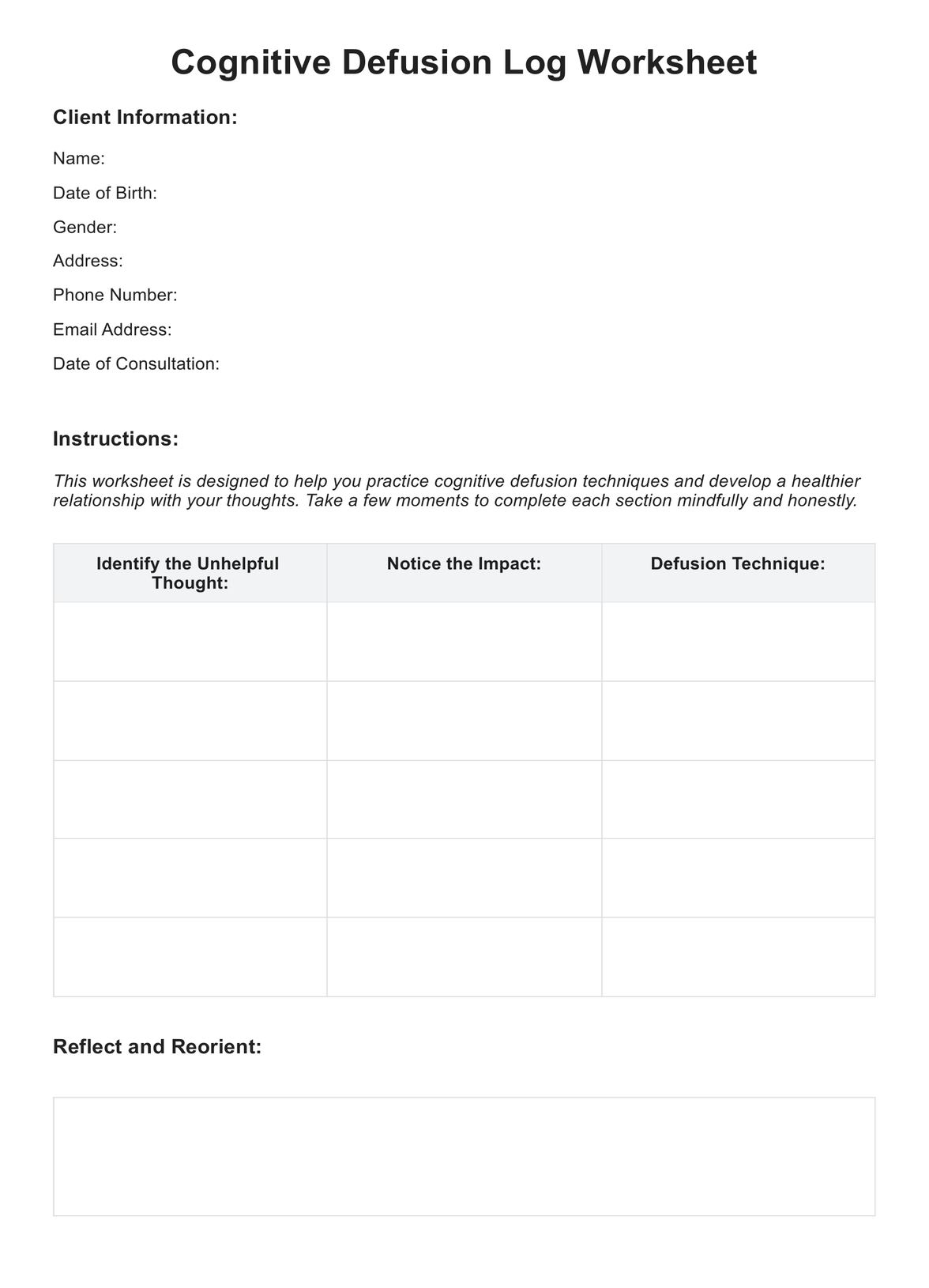
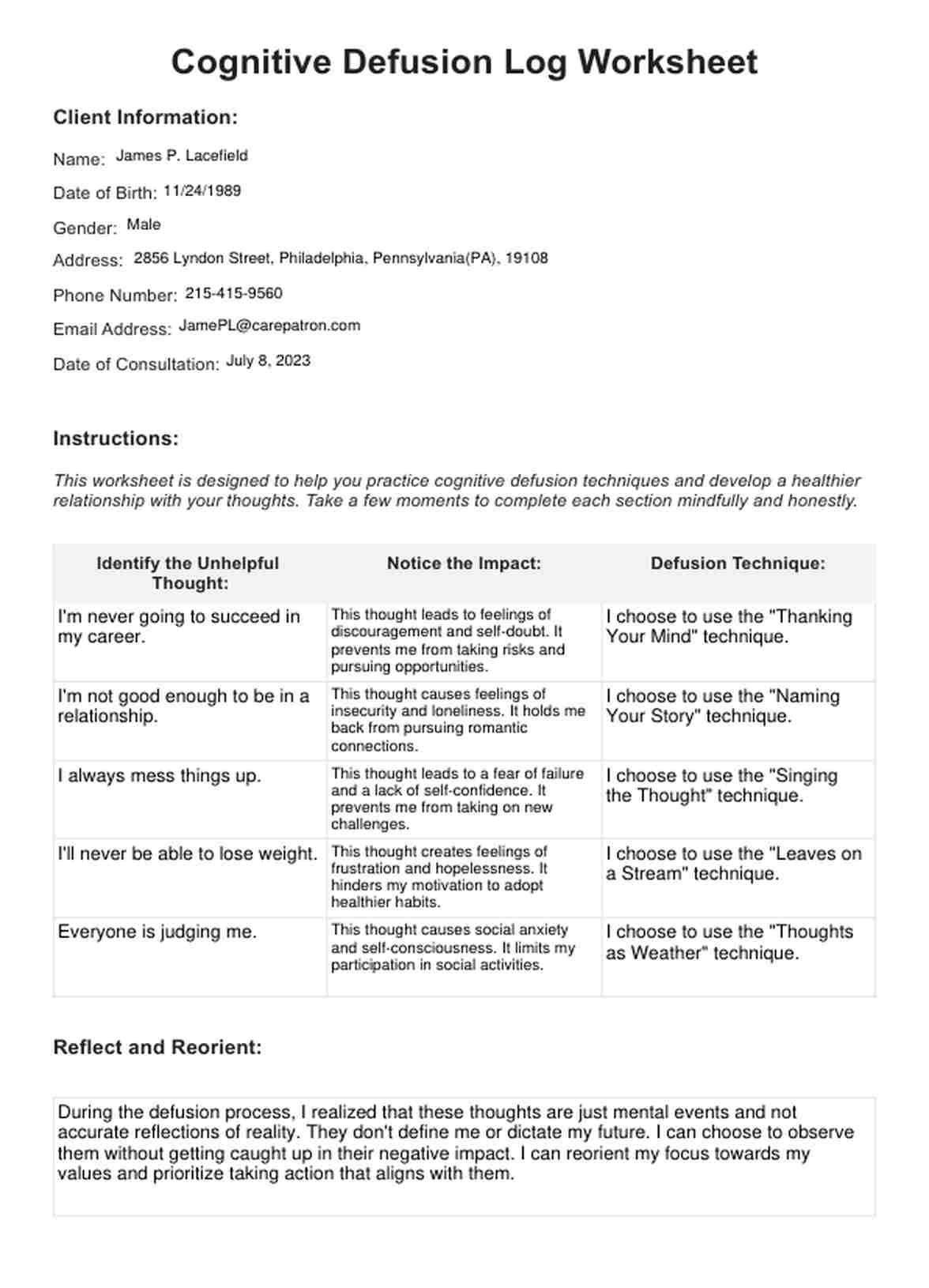















-template.jpg)






















































































